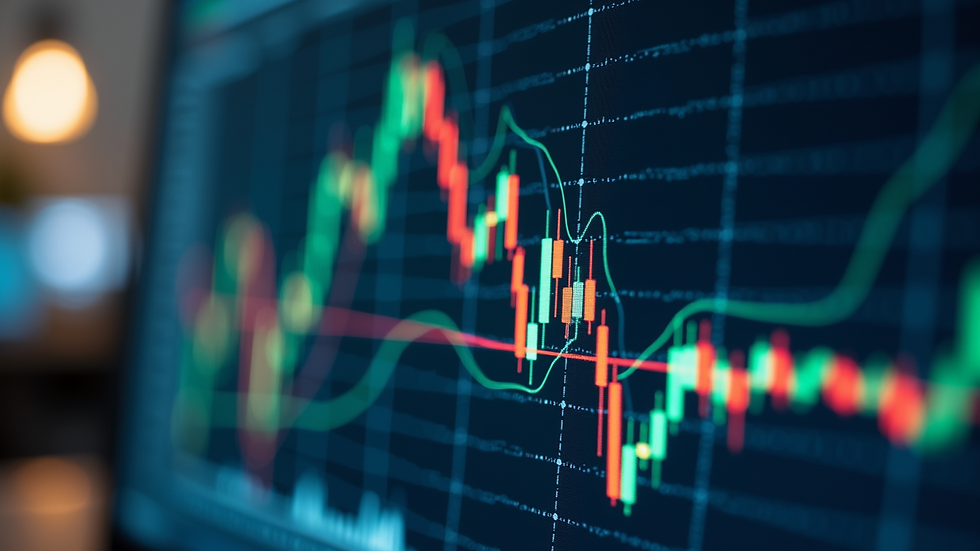The Future of Trading with Adaptive Technologies
- Capstone Trading

- Aug 11
- 4 min read
Trading has evolved dramatically over the past few decades. From manual stock picking to algorithmic trading, technology has played a pivotal role in shaping how traders operate. Today, adaptive technologies are at the forefront of this transformation, promising to revolutionize the trading landscape even further. These technologies enable systems to learn, adjust, and optimize trading strategies in real-time, making them more responsive to market changes.
Understanding how adaptive technologies work and their potential impact is essential for anyone interested in the future of trading. This article explores the key aspects of adaptive technologies, their benefits, challenges, and practical applications in modern trading.
How Adaptive Technologies Are Changing Trading
Adaptive technologies refer to systems that can modify their behavior based on new data and changing environments. In trading, this means algorithms and software that adjust their strategies dynamically to market conditions without human intervention.
Key Features of Adaptive Technologies in Trading
Real-time data processing: Adaptive systems analyze market data as it happens, allowing for immediate response.
Machine learning integration: These systems use machine learning models to identify patterns and predict market movements.
Self-optimization: They continuously refine their parameters to improve performance.
Risk management: Adaptive technologies can adjust risk exposure based on market volatility.
For example, an adaptive trading algorithm might detect a sudden increase in market volatility and automatically reduce position sizes to minimize risk. Conversely, it could increase exposure when market conditions are favorable.

Benefits of Using Adaptive Technologies
Increased efficiency: Automation reduces the need for constant manual monitoring.
Improved accuracy: Machine learning models can identify subtle market signals that humans might miss.
Faster decision-making: Real-time adjustments help capitalize on short-term opportunities.
Enhanced risk control: Dynamic risk management helps protect capital during turbulent times.
These advantages make adaptive technologies highly attractive for both individual traders and institutional investors.
Exploring the Role of Adaptive Technologies in Modern Markets
Adaptive technologies are not just theoretical concepts; they are actively shaping trading strategies across various markets, including stocks, forex, commodities, and cryptocurrencies.
Practical Applications
Algorithmic trading: Adaptive algorithms adjust their trading rules based on market feedback.
Portfolio management: Adaptive systems rebalance portfolios dynamically to optimize returns.
Market making: Adaptive technologies help market makers adjust bid-ask spreads in response to liquidity changes.
Sentiment analysis: Some systems incorporate news and social media sentiment to adapt trading decisions.
For instance, a trader using adaptive trading systems can benefit from algorithms that automatically adjust moving averages based on recent price action, improving entry and exit timing.

Challenges to Consider
While adaptive technologies offer many benefits, they also come with challenges:
Complexity: Developing and maintaining adaptive systems requires advanced technical skills.
Overfitting risk: Systems might perform well on historical data but fail in live markets.
Data quality: Poor or delayed data can lead to incorrect adaptations.
Regulatory concerns: Automated systems must comply with trading regulations and ethical standards.
Traders should carefully evaluate these factors before fully relying on adaptive technologies.
What is the 90% Rule in Trading?
The 90% rule is a trading principle that suggests 90% of trading success comes from managing risk and controlling losses, rather than from picking winning trades. This rule emphasizes the importance of discipline, strategy, and risk management over pure market prediction.
How Adaptive Technologies Support the 90% Rule
Adaptive systems excel at risk management by:
Automatically adjusting stop-loss levels based on market volatility.
Reducing position sizes during uncertain market conditions.
Diversifying trades to spread risk.
By integrating these features, adaptive technologies help traders adhere to the 90% rule, improving long-term profitability.
Practical Example
Imagine a trader using an adaptive system that monitors market volatility. When volatility spikes, the system tightens stop-loss orders and reduces trade sizes, protecting the trader from large losses. When volatility decreases, the system relaxes these constraints to allow for greater profit potential.

Implementing Adaptive Technologies in Your Trading Strategy
If you are considering incorporating adaptive technologies into your trading, here are some actionable steps:
Start with education: Learn the basics of machine learning and algorithmic trading.
Choose the right tools: Use platforms and software that support adaptive algorithms.
Backtest thoroughly: Test your adaptive strategies on historical data to evaluate performance.
Monitor continuously: Keep an eye on live performance and adjust parameters as needed.
Manage risk: Use adaptive risk controls to protect your capital.
Stay updated: Follow market trends and technological advancements to keep your system relevant.
Recommended Practices
Combine adaptive technologies with human oversight to catch unexpected behaviors.
Use diversified strategies to reduce dependency on a single system.
Regularly update your data feeds to ensure accuracy.
By following these guidelines, traders can harness the power of adaptive technologies while minimizing potential pitfalls.
Looking Ahead: The Future Landscape of Trading
The future of trading is likely to be dominated by adaptive technologies that continuously learn and evolve. As artificial intelligence and machine learning advance, these systems will become more sophisticated, offering:
Greater personalization: Tailored trading strategies based on individual risk tolerance and goals.
Improved prediction accuracy: Enhanced models that better anticipate market movements.
Seamless integration: Adaptive systems working alongside human traders in hybrid models.
Expanded market access: More traders gaining access to advanced adaptive tools.
The ongoing development of adaptive technologies promises a more efficient, responsive, and profitable trading environment.
Embracing adaptive technologies today can position traders to thrive in tomorrow's markets. By understanding their capabilities and limitations, traders can make informed decisions and stay ahead in the ever-changing world of trading.


Comments